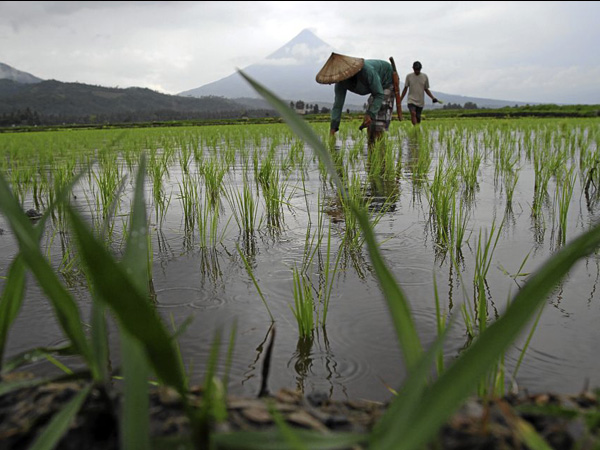Rice self-sufficiency now at 98%, according to new DA formula
MANILA, Philippines — How close are we, really, to self-reliance in rice production – 92 percent, 94 percent, 95 percent?
Malacañang has been confused about the rice self-sufficiency (RSS) ratio because different agencies have been citing different numbers, and the Department of Agriculture has stepped up to clear the matter.
Attaining self-sufficiency by 2013 is one of President Aquino’s key targets and Agriculture Secretary Proceso J. Alcala told a meeting of the United Nations’ Food and Agriculture Organization in June that the Philippines has become “practically self-sufficient in rice and corn.”
In a memo to Alcala dated May 30, Assistant Secretary Dante S. Delima spelled out a formula that would be easy to comprehend and would make the RSS ratio “a more useful policy and operations tool, and not a burden or obstacle.”
“It has come to our attention that several issues are being raised, particularly by the Presidential Management Staff, on different figures being presented by various agencies or offices as to the country’s official RSS ratio,” wrote Delima, the coordinator of the National Rice Program.
“We do not want technicalities of the RSS formula to contribute to our confusion, or hamper operations, especially since we deal with other offices, technicians, and farmers in various levels,” he added.
Article continues after this advertisementThe simplified formula takes into account the relationship of rice supply — including beginning stock and net production in terms of milled rice – and demand, which consists of per capita rice consumption multiplied by the population, plus provision for buffer stock.
Article continues after this advertisementThe new formula also considered a portion of palay produced to be immediately set aside for seeds, processing, feeds and wastes — unlike the old practice of deducting these provisions from the milled rice produced.
The resulting figure is a net RSS ratio of 98 percent as of the end of 2012.
Data from the Bureau of Agricultural Statistics show that in 2012, 18.03 million metric tons (MMT) of rice was produced nationwide.
Palay production, after deducting a 10-percent allowance for other uses, was pegged at 16.2 MMT. With milling recovery pegged at 65 percent, net production boils down to 10.547 MMT of milled rice.
Combined with a beginning rice inventory of about 2.6 MMT, supply was recorded at 13.174 MMT
On the other hand, per capita consumption was pegged at a “conservative” 119 kilograms per person, which was multiplied to population estimated at 95.86 million.
Adding a 60-day buffer stock of 2.04 MMT, demand computes at 13.447 MMT.
“With this simplified formula, the National Rice Program is confident that a more realistic RSS ratio, can reflect the actual situation on the ground and can incorporate the impact of our various programs, advocacies and interventions,” Delima said.
According to Delima’s office, other statistics show lower figures – such as 94 percent – because other formulas used considered the interplay between palay production, imports, and exports.
Delima told reporters, on Thursday, that the new formula was a result of three months of discussions. The DA adopted it in a management committee meeting held last week.
“I think we can be sure although we are still in the middle of the year and it’s hard to speculate,” Delima said. “The Secretary (Alcala) and I are confident that we can attain (the goal of 100 percent within the year).”
He added that the National Irrigation Administration contributed to the achievement of 98-percent self-sufficiency in 2012.
Due to the availability of irrigation services, there was an increase in the area cultivated as well as in the harvest, he said.
President Aquino last week publicly scolded the NIA for its poor performance.
